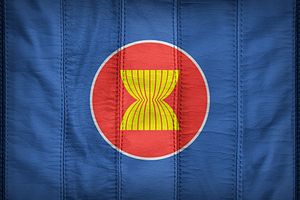Editor’s note: This analysis is a post-script to an earlier article by Carl Thayer at Flashpoints. That article is available here.
On Thursday, June 16 the official Vietnam News Agency released the complete text of the “press statement” drawn up by ASEAN foreign ministers at their special meeting with China’s foreign minister Wang Yi on June 14. The text of this press statement confirms that “the ASEAN member states consented to the content of the Press Statement of their Foreign Ministers.”
The Straits Times also confirms that the ten ASEAN ministers reached consensus on an ASEAN statement to be read out to a joint press conference at the end of the special meeting by Singapore’s Foreign Minister Vivian Balakrishnan, as ASEAN country-coordinator for dialogue relations with China. “But at the last minute,” the report continues, “the Chinese presented the ASEAN ministers instead with a 10-point consensus, which ASEAN could not accept.”
ASEAN ministers decided that Balakrishnan “would not attend any joint press briefing as it would be rude to disagree with the Chinese minster in public.” ASEAN ministers also decided to issue their joint statement separately to the media. According to The Straits Times, “That, too, was scuttled by the Chinese who lobbied its friends in the grouping to block the statement.”
Media reports suggest that China applied diplomatic pressure on Cambodia and Laos to get them to back away from their earlier endorsement of the press statement. China confirmed that it approached Laos as ASEAN Chair.
ASEAN ministers then decided that each member could “issue their own statement as they saw fit.” There was also confusion over how the original ASEAN joint statement was to be disseminated. It was in this context that Malaysia, frustrated “over the immense pressure China has put on ASEAN” released the text of the original joint statement to the AFP, which it later rescinded on instructions from the ASEAN Secretariat. By this time ASEAN ministers had dispersed.
According to one ASEAN diplomat quoted by The Straits Times, “Malaysia releasing it [the joint press statement] was a manifestation of the extreme frustration of the original five ASEAN members plus Vietnam at the particularly crude and arrogant behaviour of the Chinese.”
What is unclear is how the decision to retract the agreed joint statement was made and by whom.
Now that the complete text of the ASEAN Foreign Minister’s press statement has been issued it is possible to place the paragraphs quoted in the media in context. What is most striking is that the second paragraph of the press statement is quite forthright in linking ASEAN-China relations to the South China Sea dispute. This paragraph reads:
We noted that 2016 is a milestone for ASEAN-China relations as it marks the 25th Anniversary of ASEAN-China dialogue relations. We look forward to working together with China to bring ASEAN-China cooperation to the next level. But we also cannot ignore what is happening in the South China Sea as it is an important issue in the relations and cooperation between ASEAN and China. This is the context in which this Special ASEAN-China Foreign Ministers’ Meeting was held today.
The controversy following the ASEAN-China special meeting was a product of Chinese heavy-handedness and a bureaucratic snafu resulting from poor ASEAN coordination and decision-making under pressure.
The ball is now in ASEAN’s court. It must explain its handling of this issue and more importantly clarify the status of the joint press statement and any amendments that may be made. All ASEAN members, including Cambodia and Laos, should either reconfirm their support for the press statement or explain why they backtracked.
As a recent report by the Asia Maritime Transparency Initiative (AMTI) has demonstrated, China’s claim that it has received the support of 60 countries for its South China Sea policy is highly questionable. The AMTI report identified 50 countries that appear to be on China’s list, of which eight have confirmed their support, 39 have remained publicly silent or have issued vague statements, and three have denied China’s claim of support (including Cambodia).
More importantly, ASEAN ministers must redouble their efforts to reach agreement on a joint statement to be issued after the Arbitral Tribunal hearing the Philippines’ case against China makes it findings known. Media reports from the Philippines suggest the decision could be made no later than July 7.

































